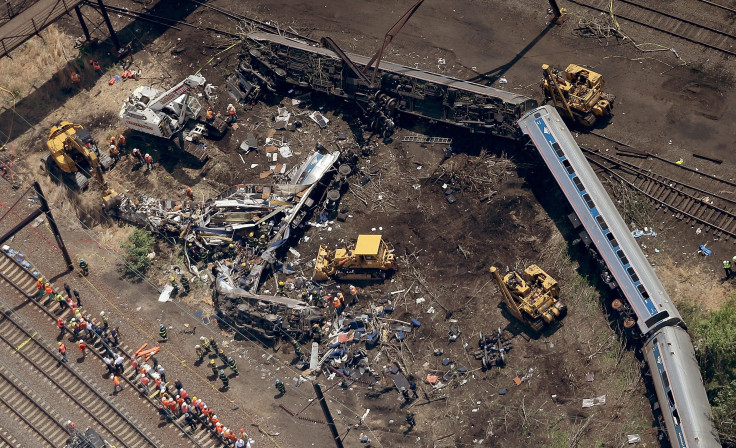New Jersey Transit Train Derailment At Penn Station: Why So Many Rail Accidents Are Happening In The US

A New Jersey Transit train derailed as it entered the Pennsylvania station in New York Thursday night. The New York City Fire Department said none of the around 100 passengers onboard the train were seriously injured.
The incident was described as a “minor NJT derailment” by New Jersey Transit officials, the New York Times reported. A couple of hours after the derailment, passengers of the derailed train were transported to a “rescue train” and the passengers waiting at the station were requested to find alternate modes of transport.
This is the second time in the last three months a New Jersey Transit train has derailed. On March 24, an Amtrak Acela train derailed at the same station, and 21 rail tracks had to be closed for the next four day.The derailment was attributed to ageing and deteriorating condition of the rail tracks at North America’s busiest train station.
Read: Train Carrying 267 Passengers Derails Near Chambers Bay In Washington
According to report by Scientific American, of the 58,299 train accidents between 2001 and 2010, 54,889 were train derailments.
According to Federal Railroad Administration, more than 15 percent of derailments of trains in the United States occur due to damaged or broken rail tracks and welds, Scientific American reported. The second and third leading causes of train derailment have been track geometry (including track alignment, gauge and elevation) and bearing failure, respectively. While the former accounts for 7.3 percent of derailments, the latter is responsible for 5.9 percent of the same.
There are also other factors that have been known to cause some of the deadliest train derailments in the U.S.. When an Amtrak passenger train derailed in Philadelphia in May 2015, leaving eight people dead and more than 200 injured, investigation found the train was travelling at 100 mph at a curved stretch of the track where the maximum speed limit should not have been more than 50 mph, NBC News reported.
Read: High-Speed Autonomous Trains Will Carry Passengers By 2023, Testing Will Start In 2019
There have been cases where derailments were due to human error.
In December 2013, a Southbound Metro-North Railroad passenger train derailed in the Bronx, New York, leaving four people dead and 61 injured. The train engineer confessed he had fallen asleep while he was monitoring the engine “due to undiagnosed severe obstructive sleep apnea exacerbated by a recent circadian rhythm shift required by his work schedule.”
Then there are other external factors for accidents which are unrelated to either train mechanics or those operating it.
An Amtrak train derailed in September 1993, which killed 47 people and injured 103 others. Minutes before the accident, a towboat operator pulling six barges had turned into the Big Bayou Canot, an area which typically prohibits barges. The towboat operator unknowingly damaged the railroad bridge which caused the train to derail.
Incidentally, Thursday’s derailment occurred days before major infrastructural repairs were scheduled to begin at the Pennsylvania station.
The Union Pacific Railroad company records for highest number of train crashes between 2005 and 2014 with 20,703 accidents; Amtrak follows closely behind with 18,460 accidents, the second most unsafe transit option for Americans as far as railways are concerned.
© Copyright IBTimes 2025. All rights reserved.






















